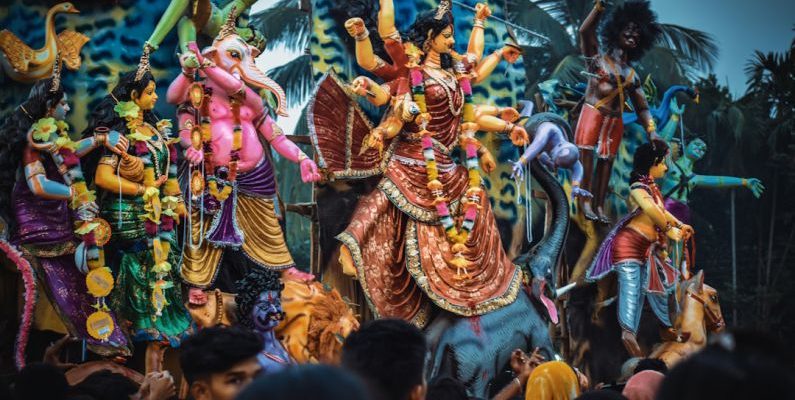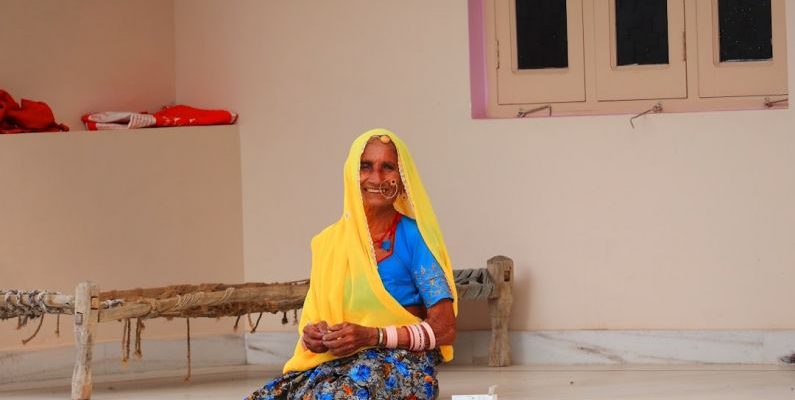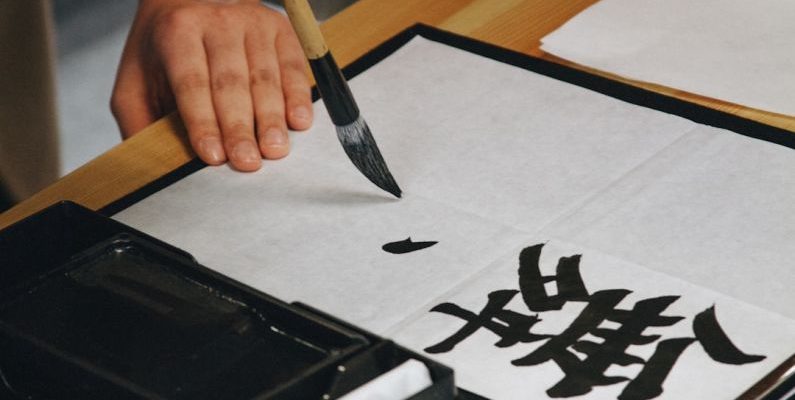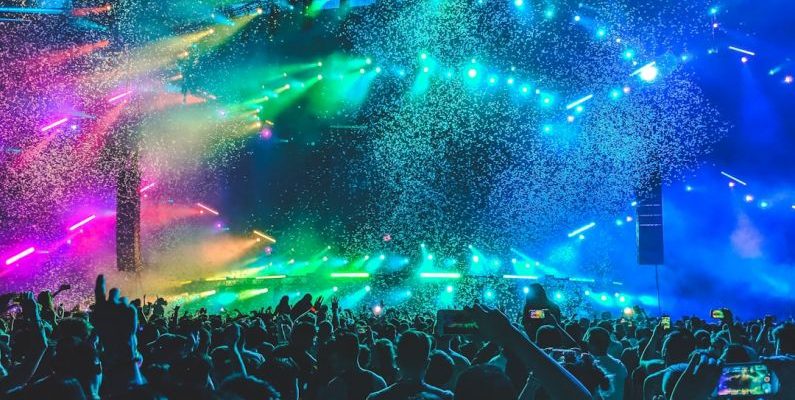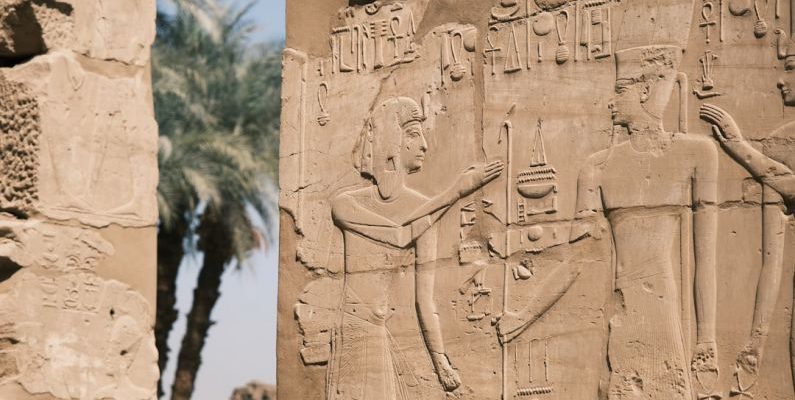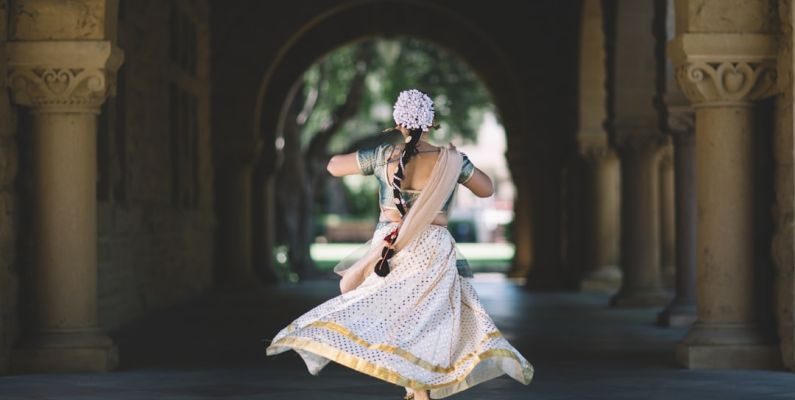Colors play a vital role in the rich tapestry of Indian culture, weaving through various aspects of life from spirituality to celebrations. The significance of colors in Indian culture is deeply rooted in traditions, beliefs, and societal norms, making them an integral part of everyday life.
Cultural Insights
The sari, a traditional Indian garment, holds a deep cultural significance within the country. It is not merely a piece of fabric but a symbol of grace, tradition, and heritage that has been woven into the cultural fabric of India for centuries. From rural villages to bustling cities, the sari is worn by women of all ages and backgrounds, transcending social and economic boundaries. Let's delve into the intricate cultural significance of the sari in India.
The History and Evolution of the Sari
The sari has a rich history that dates back thousands of years. Originating from the Indian subcontinent, the sari has evolved over time to become one of the most iconic symbols of Indian culture. Historically, the sari was draped by women across different regions of India, with each region having its own unique style and draping technique. The sari has been mentioned in ancient Indian texts and scriptures, highlighting its significance in Indian society.Symbol of Tradition and Elegance
The sari is more than just a piece of clothing; it is a symbol of tradition and elegance. Wearing a sari is not just about wrapping oneself in fabric but embracing a cultural heritage that has been passed down through generations. The intricate designs, vibrant colors, and luxurious fabrics of the sari reflect the diversity and richness of Indian culture. Whether worn during festivals, weddings, or daily life, the sari exudes a sense of grace and sophistication that is unparalleled.Empowerment and Identity
For many Indian women, the sari is a symbol of empowerment and identity. It is a garment that transcends societal norms and expectations, allowing women to express themselves freely and confidently. The versatility of the sari allows women to experiment with different styles and draping techniques, showcasing their individuality and personality. In a rapidly changing world, the sari serves as a reminder of the strength and resilience of Indian women, who continue to uphold traditions while embracing modernity.Regional Diversity and Cultural Significance
India is a land of diverse cultures and traditions, and the sari reflects this diversity. Each region of India has its own unique style of sari, reflecting the local customs, beliefs, and aesthetics. From the vibrant Bandhani saris of Gujarat to the intricate Kanjeevaram saris of Tamil Nadu, each sari tells a story of its origin and the people who wear it. The sari serves as a cultural marker, connecting women to their roots and preserving age-old traditions for future generations.Fashion and Global Influence
In recent years, the sari has gained popularity not only in India but also on the global fashion scene. Designers and fashion enthusiasts from around the world have been inspired by the beauty and elegance of the sari, incorporating elements of it into their collections. The sari has been reimagined and modernized to appeal to a younger generation while still retaining its traditional charm. Its global influence has helped elevate the status of Indian fashion on the world stage, showcasing the creativity and craftsmanship of Indian artisans.Celebrating Heritage and Legacy
As India continues to embrace modernity and globalization, the sari remains a steadfast symbol of heritage and legacy. It is a garment that transcends time and trends, embodying the spirit of Indian culture and tradition. By wearing the sari, women not only celebrate their heritage but also pay homage to the generations of women who have worn it before them. The sari is more than just a piece of clothing; it is a living testament to the enduring legacy of Indian craftsmanship and creativity.In Conclusion
The sari is not just a garment; it is a cultural phenomenon that embodies the essence of Indian heritage and tradition. Its significance goes beyond mere aesthetics, serving as a symbol of empowerment, identity, and resilience for women across India. As the sari continues to evolve and adapt to changing times, its timeless elegance and beauty remain a testament to the enduring legacy of Indian craftsmanship and creativity.
Russian folklore, with its rich tapestry of myths, legends, and fairy tales, holds a significant place in the country's cultural heritage. Embedded in the hearts and minds of the Russian people, these tales have not only entertained generations but have also played a crucial role in shaping the country's cultural identity. From Baba Yaga to the Firebird, Russian folklore is a treasure trove of fantastical characters and stories that continue to captivate audiences worldwide.
Preserving Tradition Through Oral Storytelling
At the core of Russian folklore is the tradition of oral storytelling, where tales were passed down from generation to generation through spoken word. This ancient practice not only served as a form of entertainment but also as a way to preserve cultural values and traditions. The oral tradition of storytelling allowed for the flexibility of stories to evolve and adapt to the changing times while maintaining their essence.Characters of Russian Folklore
Russian folklore is replete with a diverse cast of characters that embody the hopes, fears, and dreams of the Russian people. From the wise and enigmatic Baba Yaga, the fearsome witch who lives in a hut on chicken legs, to the noble and magical Firebird, whose feathers bring good fortune to those who catch her, these characters are deeply ingrained in the collective consciousness of the Russian people. Each character represents a facet of human nature, with their stories serving as allegories for life's trials and triumphs.Themes and Symbolism
Themes of good versus evil, love and betrayal, and the triumph of the human spirit are prevalent throughout Russian folklore. These stories often feature moral lessons and allegorical elements that reflect the complexities of the human experience. The symbolism found in Russian folklore speaks to universal truths and resonates with audiences across cultures and generations.Influence on Russian Literature and Arts
The influence of Russian folklore on the country's literature and arts cannot be overstated. Writers such as Alexander Pushkin and Nikolai Gogol drew inspiration from folk tales and legends, incorporating elements of folklore into their works. The fantastical and mystical qualities of Russian folklore continue to inspire contemporary authors, artists, and filmmakers, shaping the cultural landscape of the country.Cultural Identity and National Pride
Russian folklore plays a crucial role in shaping the cultural identity of the Russian people and fostering a sense of national pride. These tales serve as a link to the country's past, connecting present-day Russians to their ancestors and heritage. By celebrating and preserving their folklore, Russians reaffirm their unique cultural identity and strengthen their bonds as a nation.Global Influence and Legacy
The impact of Russian folklore extends beyond the borders of the country, influencing art, literature, and popular culture around the world. The iconic characters and timeless stories of Russian folklore have captured the imagination of audiences globally, transcending language and cultural barriers. From ballets and operas to animated films and novels, the legacy of Russian folklore continues to thrive in the modern era. In conclusion... Russian folklore, with its timeless tales and captivating characters, holds a special place in the hearts of the Russian people and continues to shape the cultural landscape of the country. Through oral storytelling, symbolic themes, and artistic expression, Russian folklore has left an indelible mark on the world, inspiring generations to embrace their cultural heritage and celebrate the power of storytelling. As long as these tales are passed down and cherished, the legacy of Russian folklore will endure, ensuring that its cultural impact remains everlasting.
Dating back thousands of years, Chinese calligraphy is a treasured art form that has evolved significantly throughout history. From its early origins to its contemporary expressions, the beauty and complexity of Chinese calligraphy continue to captivate audiences worldwide. This article explores the fascinating evolution of Chinese calligraphy, tracing its development through various dynasties and highlighting the key features that define this ancient practice.
The Origins of Chinese Calligraphy
Chinese calligraphy has its roots in ancient China, where it emerged as a form of artistic expression and communication. The earliest examples of Chinese writing can be traced back to the Shang dynasty (c. 1600-1046 BCE), where characters were inscribed on oracle bones for divination purposes. Over time, these early forms of writing evolved into more sophisticated scripts, laying the foundation for the development of Chinese calligraphy. One of the defining features of Chinese calligraphy is its use of brush and ink, which allow for a wide range of expressive strokes and styles. Calligraphers use a variety of brushes, ink, and paper to create intricate characters that convey meaning and emotion. The art of Chinese calligraphy is not simply about writing words but also about capturing the essence of the subject matter through the rhythm and flow of the brush strokes.The Evolution of Calligraphy Styles
Chinese calligraphy has undergone numerous stylistic changes over the centuries, reflecting the influences of different dynasties and cultural shifts. One of the most significant developments in Chinese calligraphy was the standardization of script styles during the Qin dynasty (221-206 BCE). The Qin dynasty established the seal script as the official script of the empire, leading to the development of various other script styles such as clerical script, regular script, and cursive script. Each script style has its own unique characteristics and aesthetic qualities, ranging from the precise and formal strokes of clerical script to the flowing and expressive lines of cursive script. Calligraphers often study and master multiple script styles, using them to create diverse and visually striking compositions. The ability to switch between different script styles is a hallmark of a skilled calligrapher, showcasing their mastery of the art form.Influence of Calligraphy Masters
Throughout history, Chinese calligraphy has been shaped by the contributions of master calligraphers who have left a lasting impact on the art form. These calligraphy masters, such as Wang Xizhi, Yan Zhenqing, and Su Dongpo, are revered for their innovative techniques and profound artistic vision. Their works continue to inspire and influence contemporary calligraphers, serving as a bridge between the past and the present. Wang Xizhi, often hailed as the "Sage of Calligraphy," is considered one of the greatest calligraphers in Chinese history. His masterpiece, the Lantingji Xu (Preface to the Poems Composed at the Orchid Pavilion), is renowned for its exquisite brushwork and lyrical beauty. Wang Xizhi's influence can be seen in the work of generations of calligraphers who have sought to emulate his mastery of the art form.The Legacy of Chinese Calligraphy
Chinese calligraphy remains a vibrant and dynamic art form that continues to evolve and adapt to contemporary sensibilities. In today's digital age, calligraphy has found new avenues of expression through various mediums, including computer-generated fonts and digital brush tools. Despite these modern advancements, the essence of Chinese calligraphy remains rooted in the tradition of handcrafted brushwork and artistic expression. The legacy of Chinese calligraphy endures as a testament to the rich cultural heritage of China and the enduring beauty of the written word. Through its evolution over thousands of years, Chinese calligraphy has transcended boundaries of time and space, connecting people across generations and cultures. As we look to the future, the art of Chinese calligraphy will undoubtedly continue to inspire and captivate audiences around the world, preserving its timeless beauty for generations to come.In Conclusion
The Evolution of Chinese Calligraphy showcases the rich history and artistic legacy of this ancient art form. From its origins in ancient China to its contemporary expressions, Chinese calligraphy has captivated audiences with its beauty and complexity. Through the contributions of master calligraphers and the evolution of script styles, Chinese calligraphy has continued to thrive as a cherished cultural tradition. As we look to the future, the legacy of Chinese calligraphy will undoubtedly endure, serving as a testament to the enduring power of artistic expression and cultural heritage.
From vibrant celebrations of culture and tradition to colorful displays of music and dance, festivals around the world offer a unique glimpse into the diverse tapestry of global society. Whether you're a seasoned traveler or simply looking to add some excitement to your next trip, these festivals are sure to leave you with unforgettable memories.
Carnival in Rio de Janeiro
One of the most iconic festivals in the world, Carnival in Rio de Janeiro is a spectacle of music, dance, and elaborate costumes. Held before Lent each year, this vibrant celebration sees millions of people take to the streets to watch samba parades, enjoy street parties, and soak up the infectious energy of the city. From the pulsating rhythms of the music to the dazzling colors of the costumes, Carnival in Rio de Janeiro is an experience like no other.Diwali in India
Known as the Festival of Lights, Diwali is one of the most important festivals in India and is celebrated by millions of people around the world. During this five-day festival, homes and streets are decorated with colorful lights and candles, and fireworks light up the night sky. Families come together to exchange gifts and sweets, and temples are filled with worshippers offering prayers for prosperity and good fortune. Diwali is a time of joy and togetherness, making it a must-see festival for anyone looking to experience the rich cultural heritage of India.Oktoberfest in Munich
For beer lovers and party-goers alike, Oktoberfest in Munich is a mecca of merriment and revelry. Held annually in the Bavarian capital, this world-famous festival is a celebration of all things beer, bratwurst, and Bavarian culture. Visitors can enjoy traditional music, folk dances, and, of course, plenty of beer in the massive beer tents that line the festival grounds. With its lively atmosphere and friendly locals, Oktoberfest is a one-of-a-kind experience that should not be missed.Mardi Gras in New Orleans
Known as the "Greatest Free Show on Earth," Mardi Gras in New Orleans is a larger-than-life celebration of music, parades, and revelry. Held in the weeks leading up to Lent, this legendary festival sees the streets of the French Quarter filled with costumed revelers, elaborate floats, and marching bands. From the traditional King Cake to the iconic Mardi Gras beads, every aspect of this festival is steeped in history and tradition. For a truly unforgettable experience, head to New Orleans for Mardi Gras and immerse yourself in the magic of this vibrant celebration.La Tomatina in Spain
If you're looking for a festival that's a little more unconventional, La Tomatina in Spain is the perfect choice. Held in the town of Buñol, this annual festival is a massive tomato fight that draws participants from around the world. For one hour, the streets are transformed into a sea of red as people throw ripe tomatoes at each other in a friendly battle of food and fun. La Tomatina is a unique and exhilarating experience that is sure to leave you covered in tomato juice and smiling from ear to ear.Wrapping Up
As you plan your next adventure, consider adding one of these incredible festivals to your itinerary. Whether you're dancing in the streets of Rio de Janeiro or getting messy at La Tomatina in Spain, these festivals offer a glimpse into the vibrant cultures and traditions that make our world so unique. So pack your bags, grab your dancing shoes, and get ready to experience the magic of festivals around the world that you simply can't afford to miss.
Haggling is not just a transactional negotiation in Middle Eastern markets; it is an art form deeply rooted in the region's cultural fabric. These bustling marketplaces, known for their vibrant atmosphere and diverse array of goods, offer a unique experience for both locals and tourists alike. From the aromatic spice stalls of Marrakech's souks to the glittering gold markets of Dubai, haggling is a time-honored tradition that adds a sense of excitement and playfulness to the shopping experience.
Mastering the art of haggling in Middle Eastern markets requires a combination of skill, patience, and cultural understanding. Whether you are a seasoned negotiator or a first-time visitor, these markets offer a glimpse into a world where bargaining is not just expected but celebrated. Here are some tips to help you navigate the bustling bazaars and come away with both a good deal and a memorable experience.
Understanding the Cultural Context
Before diving into the world of haggling, it is essential to understand the cultural context surrounding the practice in Middle Eastern markets. Bargaining is not seen as rude or confrontational; rather, it is viewed as a lighthearted exchange between buyer and seller. The initial price quoted is often inflated to allow for negotiation, so don't be afraid to make a counteroffer.Building Rapport
Building a rapport with the seller is key to a successful haggling experience. Take the time to exchange pleasantries and show genuine interest in the goods being sold. Complimenting the quality of the merchandise or expressing admiration for the craftsmanship can go a long way in establishing a friendly rapport with the seller.Timing is Everything
Timing plays a crucial role in the art of haggling. Avoid the peak hours when the markets are crowded, as sellers may be less inclined to negotiate when they are busy. Instead, visit the markets early in the morning or late in the evening when the atmosphere is more relaxed, and sellers are eager to make a sale.Mastering the Poker Face
Maintaining a poker face during negotiations is essential to securing a good deal. Sellers are adept at reading body language and facial expressions, so avoid showing too much excitement or hesitation when discussing prices. Stay composed and confident, and you may find the seller more willing to meet your desired price.The Power of Silence
Silence can be a powerful tool in the art of haggling. After making your counteroffer, resist the urge to fill the silence with chatter. Allow the seller time to consider your proposal and wait for their response. Oftentimes, the seller will be the first to break the silence and make a new offer.Walking Away
One of the most effective strategies in haggling is the willingness to walk away. If you are unable to reach a mutually agreeable price, don't be afraid to politely thank the seller and move on. In many cases, the seller may call you back and offer a lower price to close the deal.Embracing the Experience
Above all, haggling in Middle Eastern markets is about embracing the experience and enjoying the process. Approach each negotiation with a sense of curiosity and adventure, and you may find yourself not only with a unique souvenir but also a newfound appreciation for the art of haggling. In conclusion, the art of haggling in Middle Eastern markets is a time-honored tradition that offers a glimpse into the region's rich cultural heritage. By understanding the cultural context, building rapport, mastering timing and body language, and embracing the experience, visitors can navigate the bustling bazaars with confidence and come away with both a good deal and lasting memories. So, the next time you find yourself wandering through the vibrant markets of the Middle East, remember to channel your inner negotiator and enjoy the thrill of the haggle.
Ancient Egypt continues to captivate us with its rich history, fascinating architecture, and intricate art forms. Among the most enigmatic aspects of this civilization are the Egyptian hieroglyphs. These symbolic writings have intrigued scholars and enthusiasts for centuries, offering a window into the mystical beliefs and culture of the ancient Egyptians. The intricate nature of hieroglyphs goes beyond mere language; it delves into the realms of spirituality, symbolism, and the divine. Let us unravel the mysticism of Egyptian hieroglyphs and explore the depths of their significance.
The Origins of Hieroglyphs
Hieroglyphs, derived from the Greek words "hieros" (sacred) and "glypho" (carving), were considered sacred writings by the ancient Egyptians. The origins of hieroglyphs can be traced back to around 3200 BCE during the Early Dynastic Period. Initially, hieroglyphs were pictorial representations of objects, animals, and concepts. Over time, they evolved into a complex system of writing that combined phonetic and logographic elements.The Language of the Gods
The ancient Egyptians believed that hieroglyphs were a gift from the gods. They considered writing to be a divine act that connected the earthly realm with the spiritual world. Hieroglyphs were used in religious texts, temple inscriptions, and funerary art to convey sacred knowledge and communicate with the gods. The intricate symbols were imbued with magical properties and were believed to have the power to invoke deities and protect the deceased in the afterlife.Symbolism and Meaning
Each hieroglyph carried a symbolic meaning beyond its literal representation. The ancient Egyptians believed in the concept of Ma'at, which encompassed truth, balance, and order. Hieroglyphs were used to express these principles through symbolic imagery. For example, the symbol of the Ankh, often interpreted as the key of life, represented eternal life and the divine union of male and female energies. The Eye of Horus symbolized protection, healing, and royal power, while the Scarab beetle represented rebirth and transformation.The Book of the Dead
One of the most famous collections of Egyptian hieroglyphic texts is the Book of the Dead, also known as the Book of Coming Forth by Day. This funerary text served as a guide for the deceased in the afterlife, providing instructions on how to navigate the perilous journey to the underworld. The Book of the Dead was filled with spells, incantations, and prayers written in hieroglyphs to assist the deceased in overcoming obstacles and achieving eternal life.Decoding the Hieroglyphs
The decipherment of Egyptian hieroglyphs was a monumental achievement in the field of Egyptology. The Rosetta Stone, discovered in 1799, played a crucial role in unlocking the secrets of hieroglyphic writing. The stone contained a decree issued in three scripts: Ancient Egyptian hieroglyphs, Demotic script, and Greek. By comparing the Greek text, which was already known, with the hieroglyphic inscriptions, scholars were able to decipher the ancient Egyptian language and unlock the meanings of hieroglyphs.The Legacy of Hieroglyphs
Despite the passage of millennia, the legacy of Egyptian hieroglyphs endures. These mystical symbols continue to inspire artists, writers, and scholars around the world. The intricate beauty and spiritual depth of hieroglyphs serve as a testament to the profound wisdom and creativity of the ancient Egyptians. By delving into the mysticism of Egyptian hieroglyphs, we gain a deeper understanding of the beliefs, values, and aspirations of this remarkable civilization.Unveiling the Secrets
In conclusion, the mysticism of Egyptian hieroglyphs transcends mere words on a page. These sacred symbols are a testament to the spiritual beliefs and cultural richness of ancient Egypt. By delving into the symbolism, meaning, and legacy of hieroglyphs, we unravel the secrets of a civilization that revered writing as a divine gift from the gods. The enigmatic beauty of Egyptian hieroglyphs continues to intrigue and inspire us, inviting us to explore the depths of their mystical significance.The Rich and Vibrant Maori Culture of New Zealand
New Zealand, a land of breathtaking landscapes and diverse cultures, is home to the indigenous Maori people. The Maori culture is deeply rooted in the history and traditions of the land, and exploring it offers a fascinating glimpse into the unique heritage of this Pacific nation.Origins and History
The Maori people are Polynesian settlers who arrived in New Zealand around the 13th century, making them the first inhabitants of the islands. Their rich oral tradition, known as whakapapa, tells stories of their migration across the Pacific Ocean and their connection to the land and nature. The Maori culture is characterized by a strong sense of community and kinship, with extended families playing a central role in social structure. Traditional Maori society was organized into tribes, or iwi, each with its own leader and customs. These tribes often competed for resources and territory but also formed alliances through intermarriage and trade.Language and Art
The Maori language, te reo Maori, is an integral part of the culture and is recognized as one of New Zealand's official languages. Efforts to revitalize and preserve the language have been ongoing, with Maori language immersion schools and cultural programs playing a key role in its promotion. Maori art is another prominent aspect of the culture, with intricate carvings and woven designs adorning traditional meeting houses, or marae. These artworks often depict ancestral stories and symbols, reflecting the spiritual beliefs and values of the Maori people. The art of ta moko, or traditional tattooing, is also a significant cultural practice, with each design carrying personal and tribal meanings.Ceremonies and Rituals
Central to Maori culture are ceremonies and rituals that mark significant events and milestones in life. The powhiri, or traditional welcome ceremony, is performed to greet visitors and acknowledge their arrival on tribal land. It involves speeches, songs, and the sharing of food, symbolizing the building of relationships and connections. Another important ceremony is the haka, a powerful and dynamic dance that is performed on various occasions, including welcoming ceremonies, funerals, and sporting events. The haka is a symbol of strength, pride, and identity for the Maori people, and its rhythmic chanting and synchronized movements are a mesmerizing display of cultural expression.Spirituality and Beliefs
The Maori people have a deep spiritual connection to the natural world, with beliefs rooted in the concept of whakapapa, or genealogy. They see themselves as part of a larger cosmic order, where all living beings are interconnected and interdependent. The spiritual guardians of the Maori are the atua, or gods, who oversee different aspects of life and nature. One of the most sacred Maori traditions is the tangi, or funeral ritual, which honors the deceased and guides their spirit to the afterlife. The tangi involves chanting, prayers, and mourning rituals that help the community come together to grieve and pay their respects.Celebrations and Festivals
Throughout the year, the Maori people celebrate various festivals and events that showcase their culture and traditions. One of the most important festivals is Matariki, the Maori New Year, which marks the rising of the Pleiades star cluster and the beginning of a new cycle. Matariki is a time for reflection, renewal, and community gatherings, where people come together to share food, stories, and music. Another popular event is Waitangi Day, which commemorates the signing of the Treaty of Waitangi between the Maori chiefs and the British Crown in 1840. This day is a public holiday in New Zealand and is marked by cultural performances, traditional ceremonies, and discussions about the ongoing impact of the treaty on Maori rights and sovereignty.In Conclusion
Exploring the Maori culture of New Zealand offers a profound insight into the history, traditions, and values of this vibrant indigenous community. From their language and art to their ceremonies and beliefs, the Maori people have a rich and diverse cultural heritage that continues to thrive in the modern world. By embracing and honoring the Maori culture, New Zealand celebrates its unique identity and strengthens its connection to the land and its people.
Bollywood has long been a cultural powerhouse in India, shaping the country's entertainment landscape and influencing society in numerous ways. From fashion trends to language usage, Bollywood's impact can be felt in various aspects of daily life for many Indians. Understanding the depth of Bollywood's influence reveals the intricate relationship between the film industry and the nation's identity.
**The Cultural Significance of Bollywood**
Bollywood movies are not just a form of entertainment; they are an integral part of Indian culture. The industry produces a vast number of films each year, covering a wide range of genres from romantic dramas to action-packed thrillers. These movies serve as a reflection of society, addressing social issues, family dynamics, and historical events. The colorful song and dance sequences characteristic of Bollywood films have become synonymous with Indian cinema, creating a unique cinematic style that is instantly recognizable worldwide.
**Fashion and Trends**
One of the most visible impacts of Bollywood is its influence on fashion and trends. Costumes worn by actors and actresses in movies often set new styles and inspire clothing lines. The popularity of certain accessories or hairstyles can skyrocket after being featured in a hit Bollywood film. Designers frequently look to Bollywood for inspiration, showcasing outfits that mirror those seen on the big screen. The industry has the power to dictate fashion trends and shape the way people dress in India.
**Language and Dialogue**
Bollywood has also played a significant role in shaping language usage in India. Dialogues from iconic movies often become part of everyday conversations, with people quoting famous lines to express emotions or convey messages. The language used in Bollywood films reflects the diversity of India, incorporating various regional dialects and accents. As a result, Bollywood has contributed to the preservation and promotion of different languages across the country.
**Social Influence**
Beyond entertainment, Bollywood has a profound social influence on Indian society. The themes explored in movies can spark discussions on important issues such as gender equality, caste discrimination, and political corruption. Bollywood stars are often seen as role models, and their actions both on and off-screen can influence public opinion and behavior. Celebrities use their platforms to raise awareness about social causes, leading to increased activism and charitable initiatives.
**Global Reach and Soft Power**
In recent years, Bollywood has expanded its reach beyond Indian borders, gaining popularity in various countries around the world. The industry's global appeal has helped promote Indian culture internationally, showcasing the country's traditions, music, and dance forms. Bollywood movies are now screened in cinemas worldwide, attracting a diverse audience that transcends cultural boundaries. This global reach has enhanced India's soft power, increasing its influence on the global stage.
**The Future of Bollywood's Influence**
As Bollywood continues to evolve, its influence in India is likely to grow even stronger. With advancements in technology and changing audience preferences, the industry is adapting to new trends and exploring innovative storytelling techniques. The rise of streaming platforms has provided a new avenue for Bollywood to reach audiences both within and outside India. The industry's ability to connect with people on a personal and emotional level ensures that its impact will endure for generations to come.
**In Conclusion**
Bollywood's influence in India is multifaceted and far-reaching, encompassing aspects of culture, fashion, language, and social change. The industry's ability to entertain, educate, and inspire audiences has solidified its position as a cultural juggernaut within the country. As Bollywood continues to push boundaries and captivate audiences worldwide, its influence will remain a defining characteristic of Indian society.
Native American tribes have a rich and diverse history that spans thousands of years. These indigenous peoples have inhabited the land now known as the United States long before European settlers arrived. The history and culture of Native American tribes are deeply intertwined with the land, traditions, and values that have been passed down through generations.
